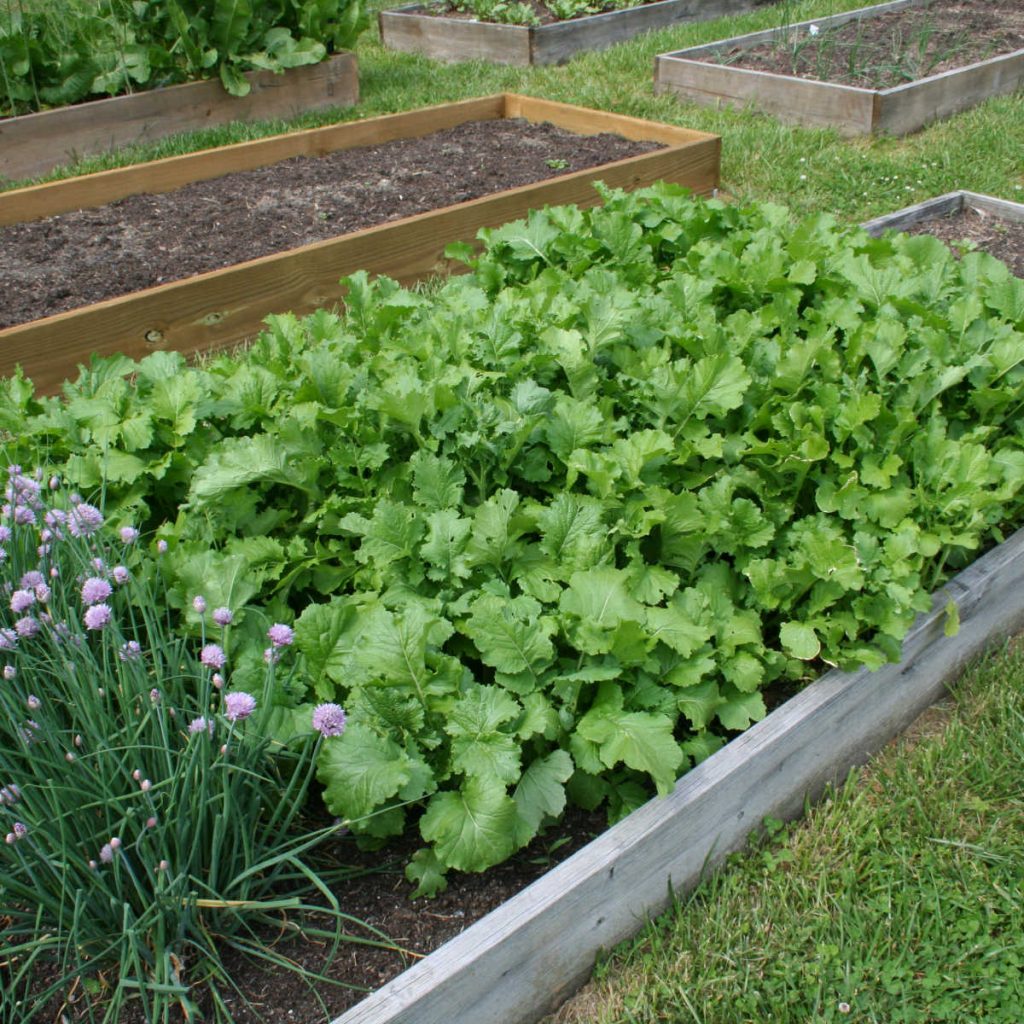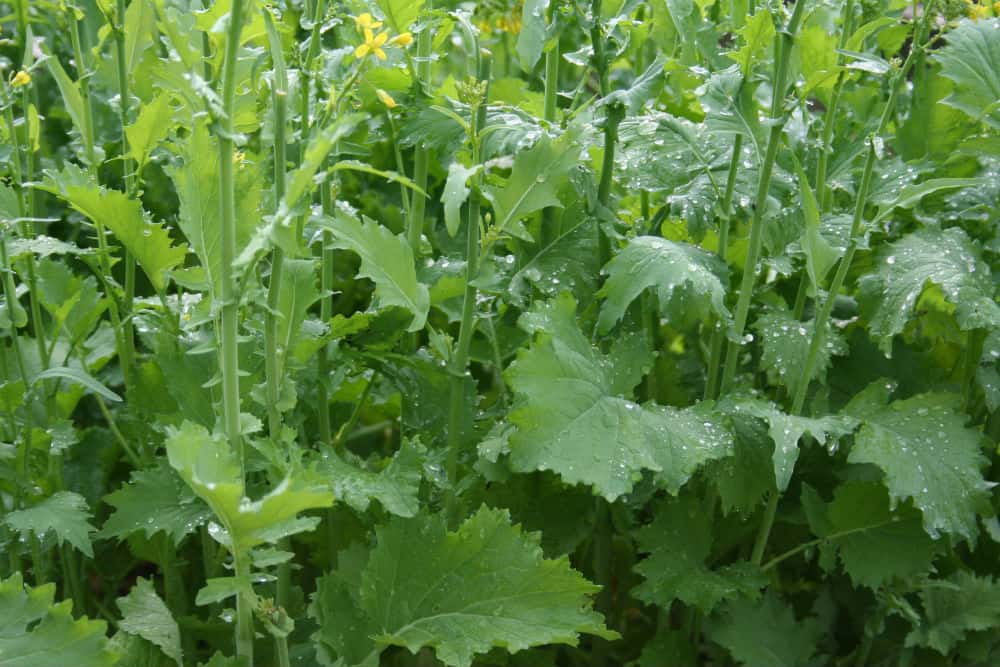Broccoli rabe, or rapini, is an Italian vegetable that is sort of like a cross between greens and broccoli. I love it and enjoy growing it in my home garden.
Plant Profile: Broccoli Rabe
Botanical Name: Brassica rapa sylvestris
Alternative Common Names: Broccoli Raab, Rapini, Cime di rapa
Light Requirements: Broccoli rabe thrives in full sun, requiring at least 6 to 8 hours of direct sunlight per day. However, it can tolerate partial shade, especially in hotter climates.
Soil Requirements: Broccoli rabe prefers well-draining, fertile soil with a pH level between 6.0 and 7.0. It grows best in soil enriched with organic matter, such as compost, to promote healthy growth and development.
Water Requirements: Provide consistent moisture to the soil, ensuring it remains evenly moist but not waterlogged. Adequate watering is particularly crucial during periods of dry weather or when the plants are actively growing. Aim to water deeply and regularly, especially during the germination and growing stages.
Fertilizer Requirements: Before planting, amend the soil with a balanced fertilizer or compost to provide essential nutrients. Additionally, side-dress the plants with a nitrogen-rich fertilizer, such as fish emulsion or compost tea, during the growing season to support healthy leafy growth.
How to Start in the Vegetable Garden:
Selecting a Planting Site
Choose a well-drained location in your vegetable garden that receives ample sunlight. Avoid areas prone to waterlogging or poor drainage. We grow ours in the raised bed gardens, and rabe thrives there. The picture below shows our broccoli rabe growing alongside chives in the spring in our raised bed vegetable garden.

Preparing the Soil
Work the soil thoroughly to remove any weeds, rocks, or debris. Incorporate organic matter, such as compost or aged manure, to enrich the soil and improve its fertility.
Planting Seeds: Broccoli rabe seeds can be difficult to find in stores. Here’s a link to them on Amazon (Home Garden Joy is an affiliate, and make a commission on the sale): Broccoli Rabe.
Sow the seeds directly into the garden about 4 to 6 weeks before the last expected frost date in your area. Plant the seeds approximately ¼ to ½ inch deep and keep the soil consistently moist until germination occurs.
Thin the plants if you sowed the seeds too thickly so that they are about four inches apart. When the plants look like the picture below, use scissors to snip the broccoli rabe stems. Wash them, pat dry, and strip the leaves and florets off for cooking.
Caring for Broccoli Rabe
Provide regular watering to keep the soil evenly moist, especially during dry spells. Mulch around the plants to help conserve moisture, suppress weeds, and maintain soil temperature. Monitor for pests, such as aphids or flea beetles, and manage them promptly using organic pest control methods if necessary.
Harvesting: Harvest broccoli rabe when the flower buds are still tightly closed and before the flowers open. Use clean, sharp scissors or garden shears to cut the central stem just above the lowest set of leaves. Regular harvesting encourages continued production and prevents the plant from bolting.
Broccoli Rabe – One of My Favorite Vegetables
Broccoli rabe is a vegetable that’s easy to grow yet unfamiliar to many American gardeners. And that’s a shame, because this delicious Italian delicacy is nutritious, grows in most gardening zones, and offers yet another dark, leafy green vegetable for the cook to experiment with.
The entire floret and leaves are eaten. When the florets appear yet before they open into yellow blooms, stems are picked and the leaves and florets chopped and sauteed or steamed. You can eat the stems when they are tender but they do tend to get tough after a while.’shame, because this delicious Italian delicacy is nutritious and grows in most gardening zones.
The flavor is complex, slightly bitter, and more akin to chard or spinach than broccoli. The entire floret (shown above in my garden) and leaves are eaten. When the florets appear yet before they open into yellow blooms, stems are picked and the leaves and florets chopped and sauteed or steamed. You can eat the stems when they are tender but they do tend to get tough after a while.






I grew some one year. We liked it. I tossed some in olive oil with garlic salt and grilled it. Yummy. Our summers get to hot for it to last long though so I decided not to give it space in my small garden again. Hope yours does well.
Very Informative!
-Nevin @THROUGH THE LENS